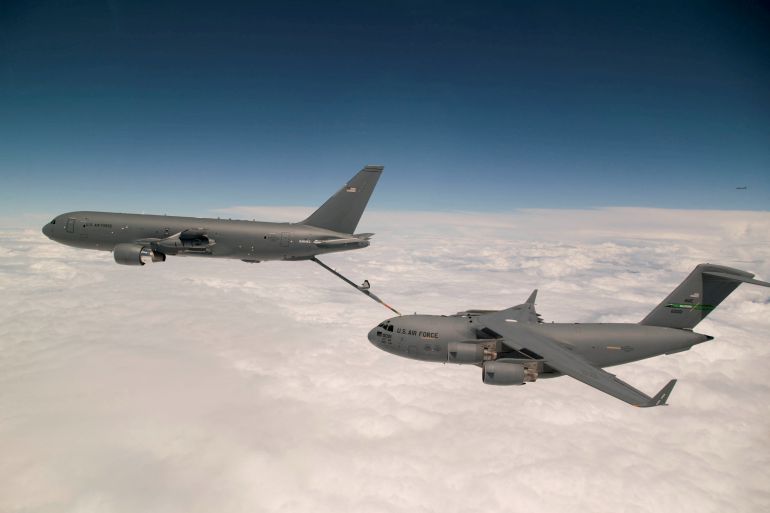
[This is part 5 of a 6-part series on Denmark and its support for the U.S. empire. See Parts I, II, III, and IV.—Editors]
Part V: War Costs and Profits
When Prime Minister Mette Frederiksen met with President Donald Trump, December 2019, Trump was threatening less support for NATO and European conflicts if they did not use 2% of their Gross Domestic Product (GDP) for defense. What defines “defense” is at issue herein since Denmark, at least, could not meet 2% without using funds for the current war in Ukraine-Russia.
Nearly all liberal, neo-liberal, and most conservative Europeans fear that Trump could win the upcoming election and would stop funding the war. Leaders, such as Frederiksen, EU Commissioner, Germany’s conservative-right leader Ursula von der Leyen, and Annalena Baerboch, former leader of Germany’s Green party, and current Foreign Affairs Minister, push for greater military might, even an EU army, in case Trump would follow through. Some European leaders, such as Poland’s PM Andrzej Duda, suggest EU should have its own nuclear weapons.
Apparently, Green warrior Baerboch is not bothered about military-war pollution to the earth, sea and waters—nor are environment activists, such as Greta Thunberg. The world’s military are the greatest of polluters even when not at war. The U.S. military alone is the polluter No. 1. It “emits more than entire industrialized nations like Portugal and Denmark, yet evades scrutiny.” The U.S. military has a “carbon footprint larger than any other institution on earth.”
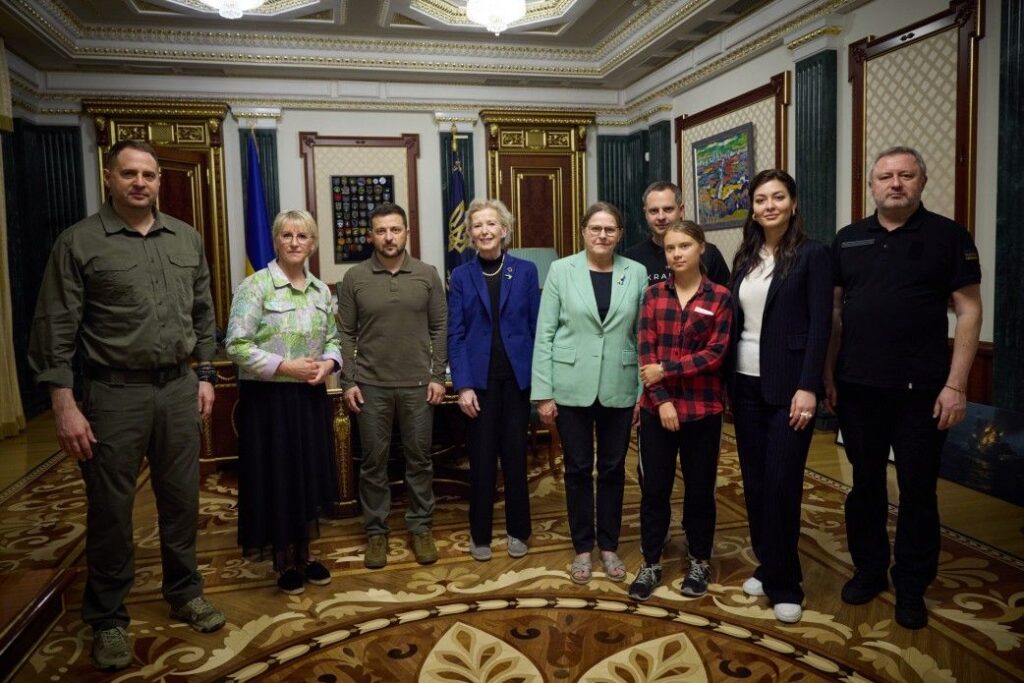
Baerboch and other “green” leaders, such as social democrat Frederiken, were in the lead to establish a special EU Ukraine Fund, in March 2023. This measure assures that Ukraine would have $9 billion to cover the war-torn country’s budget deficit and keep its economy running.
I have written to several ministries to find answers to how much money is being spent for Ukraine-Russia war, and how that matches with the famous 2% Gross Domestic Product (GDP).
Denmark’s Foreign Ministry reported, May 9, 2024, $7.4 billion in military support directly to Ukraine, and $700,000 in civilian aid since the start of the war.
(Germany’s DW reported $9.36 billion, as I wrote in the first article.)
The Defense Ministry press chief, Morten Kaus, replied that Denmark made NATO’s commitment for 2% of GDP in 2023, doubling 2016 expenditures. This year 2.37% has been spent or allocated.
Denmark’s GDP in 2023 was ca. $400 billion. Two percent for “defense” would be $8 billion. Denmark’s 2024 expected GDP should be ca. $410 billion, and “defense” ca. $8.2 billion.
The Defense Ministry agrees with me that the Defense budget for 2023 was $4.5 billion and in 2024 is $5.42 billion.
According to what Morten Kaus wrote regarding outlays, it appears that without spending huge sums (costs of weaponry) for the war in Ukraine that Denmark would not meet the U.S. requirement of using 2% of GDP for “defense.”
Morten Kaus replied, August 27, that I was mixing pears and bananas, yet he basically had the same sums that I had found. Defense budget, 2024, $5.4 billion plus $760,000 grant; military support in the EU Ukraine Fund of $2.26 billion, plus “a number of other expenses.”
That sum without “other expenses” is $8.4 billion, which is 2%, thus meeting the requirement. Kaus concluded: “Overall, Denmark reports defense expenditures of $10.28 billion, which corresponds to 2.37% of GDP. Kaus cites NATO’s latest report.
That leaves a difference of $1.88 billion, which must have come from other budgets or from the large surplus of 2023 ($13.87 billion) to make the difference.
I realize that all these statistics are not uniform and are confusing. My main point is that Denmark is at the top of NATO countries with its military-war budgets and surpasses U.S. goals regardless of where they take the money to pay for defense and war. Still Denmark needs to be at war to meet its “defense” budget of 2% GDP. The Defense Ministry press chief Kaus did not reply to my point.
With Trump now president, Frederiksen could still dance with him as a favorite NATO ally if he wishes that. Frederiksen is otherwise quite busy now trying to show Greenlanders that she loves them and will no longer treat them as her underlings.
Frederiksen is still a Social Democrat but shares power with the other two parties. During Trump’s first presidency, Frederiksen’s Social Democrats ruled alone. She had offended Trump by saying that his bid to buy Greenland—a semi-autonomous colony where the U.S. secretly placed atomic bombs—was “absurd.” Trump replied that due to her “nasty” remark he would not travel to Denmark. Instead, they med in London at a NATO conference.
As I outlined in my first article in this series, Frederiksen recalled that following that disagreement the two “can count on one another” and they “swing well together”, and, she still “has a good relation with Trump.”
She reminded her constituents, and Trump across the Atlantic, that she increased Denmark’s defense budget to over the two percent that Trump had demanded of all NATO countries. She added that Trump speaks directly, and her Danish government “is ready for that. For example, with continuing to support Ukraine in its war with Russia.”
”We also intend to lean quite heavily into this, because with all the turmoil in the world, the transatlantic ties are absolutely crucial.”
Overall Military Expenditures
The Ukraine Defense Contact Group (UDCG, also known as the Ramstein group) is an alliance of 57 countries (all 32 NATO members and 25 other countries) and the European Union supporting Ukraine by sending military equipment and money.
Since January 2022 until March 2024, Western nations, mainly, have pledged more than $380 billion in aid to Ukraine, including nearly $118 billion in direct military aid from individual countries. U.S. “donated” $52 billion as of May 2024, and appropriated $113 billion. That brings total U.S. military donations to $165 billion (or $175 bn, according to the Council on Foreign Relations.
The EU established another fund, European Peace Facility, which has acquired $6.24 billion to spend on military elements for Ukraine. It pledges another $5.57 billion. I don’t know if that sum is included in the figures above.
The list of equipment from bullets to bombs is longer than this series entirety. From hundreds of millions rounds of ammunition and artillery rounds to about 100 fighter jets, thousands of tanks and other armored vehicles, and missiles-rockets-drones galore.
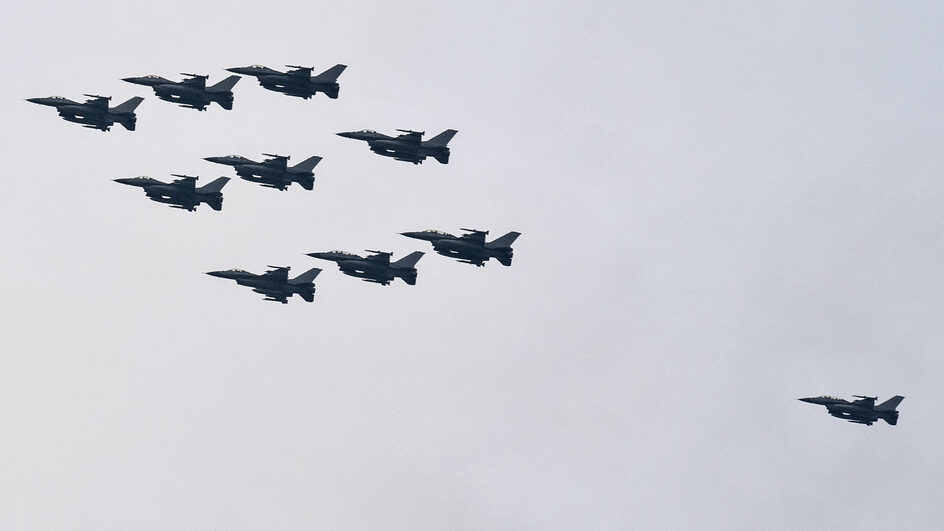
According to The New York Times, Ukraine spent $64.8 billion to its military just in 2023. “That accounted for 58 percent of the government’s overall spending last year and 37 percent of the country’s gross domestic product. Only seven other countries spent more on military and defense costs than Ukraine in 2023, analysts found.”
How much of Ukraine’s military expenses are directly related to the war is not stated. In 2021, before the war, its military budget was just under $6 billion. Two years later that sum represented under 10% of what was spent on military.
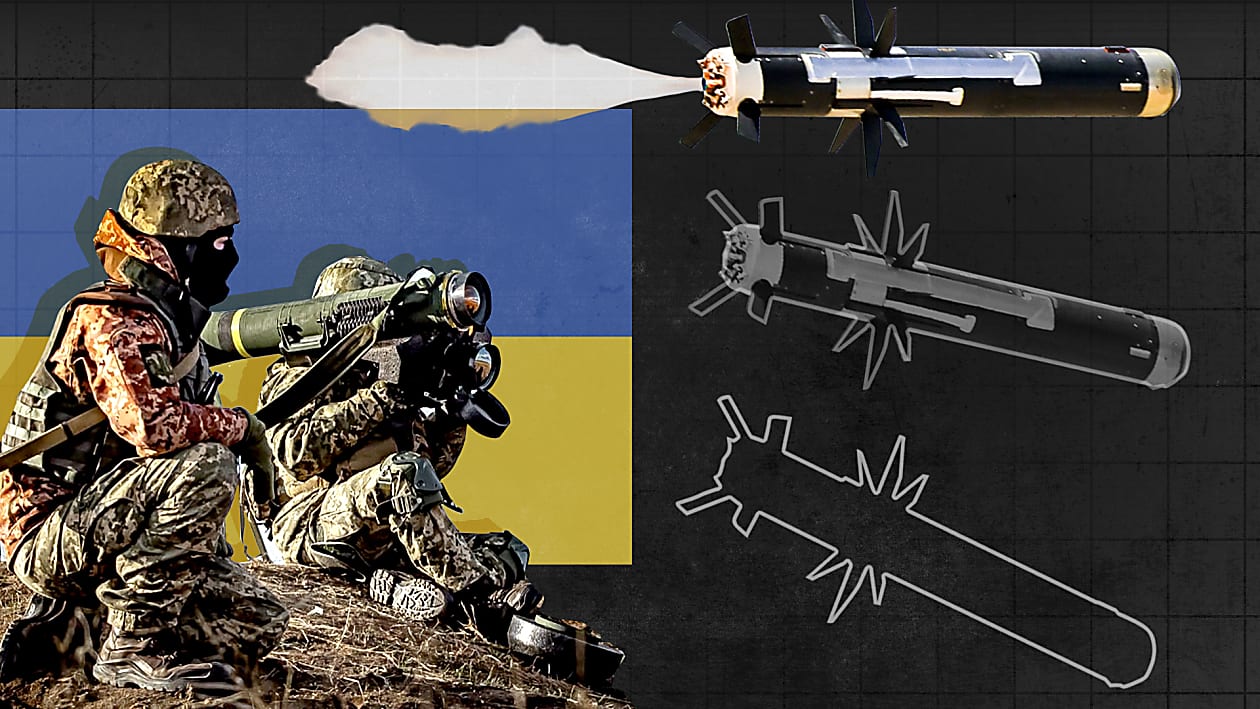
What has Russia spent? In February 2024, the Pentagon estimated $211 billion in total costs. Russia has not reported publicly any figures. On top of that, enemy sanctions are astronomical.
“On 1 March 2022, the French finance minister Bruno Le Maire said the total amount of Russian assets being frozen by sanctions amounted to $1 trillion.” The frozen funds are being used by the West to support Ukraine.
When the war began, Russia’s Central Bank holdings in foreign-exchange reserves amounted to $630 billion. Had the government been planning to invade Ukraine, as U.S./NATO claimed for months that it would, they would have moved those assets to their own banks.
Besides government sanctions and donations, hundreds of corporations make sanctions and donations, as do churches, civic organizations and individuals, on and on. It is impossible for me to find total costs of this war after many hours over several days research, but it is reaching trillions.
Now that most NATO countries have reached the required two percent of GDP for “defense”, its leadership is gearing to increase the quota to three percent.
Finland, Sweden, Norway, Iceland Costs for Ukraine Proxy War
The first Danish woman prime minister was Social Democrat Helle Thorning Schmidt (2011-15). Her enthusiasm for war included offering President Barack Obama her military might for “regime change” in Syria. She seemed disappointed that a full-scale war to remove Bashar al-Assad had been averted when Syria turned over all its chemical weapons for destruction to the U.S., at the gullible encouragement of President Vladimir Putin.

“Denmark is one of those countries that deliver most. We are at the level with Americans, and in that way we also consider Denmark a strong, active and very solidarity NATO land,” PM Schmidt declared on September 2, 2014.
Barack Obama seemed to echo Schmidt when he welcomed Denmark’s next prime minister, Lars Loekke Rasmussen, and the other four Nordic leaders, to a State Dinner on May 13, 2016.
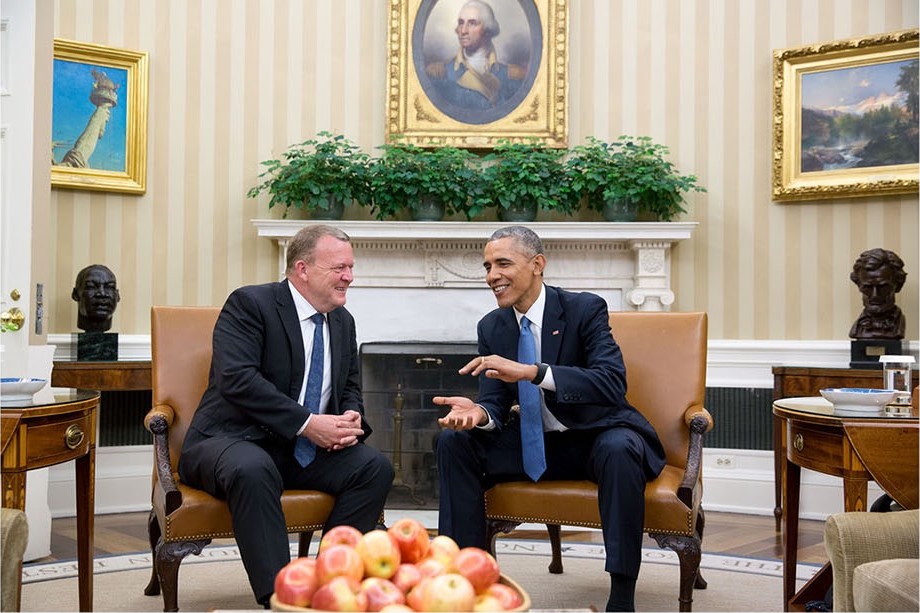
Finland and Sweden had remained out of NATO until this war. Most Western progressives and many leftists, even most communist parties accuse Russia of committing a war crime for invading Ukraine. This pushed almost all neutral Scandinavians to join the U.S. war machine. While it is evident that the military incursion did influence many voters, the reality is also that most Finnish and Swedish politicians have wanted to be in the Western war club for a long time. The Obama presidential state dinner shows that.
Finland and Sweden leaders were so impressed by the dinner that they signed an agreement to end their neutrality and, in effect, join NATO. Sweden signed a “Host Country Agreement with NATO” giving the war alliance rights to military troops and exercises in Sweden and even the right to war on Swedish territory “if a crisis” warrants it. Finland signed a similar agreement.
Following the dinner, Denmark’s Foreign Minister, Kristian Jensen, made no bones about Denmark’s total loyalty: “In relationship to Syria our goal is to remove Assad, as one of the worst dictators in the world at this time.”
In 2016, only 27% of Finns supported joining NATO. In 2012, only 17% of Swedes so desired. Yet Sweden’s politicians prepared for a NATO future by assisting U.S. Middle East war with military training for pro-U.S. Kurdish and some Iraqis. Polls in 2023-4 showed 63% Swedes and 80% Finns supported joining the NATO war machine.
Fifteen countries have recently signed Defense Cooperation Agreements. Finland’s agreement grants Washington access to 15 of its military bases for U.S. forces and allows it to bring defense equipment, supplies, and materials to Finland.
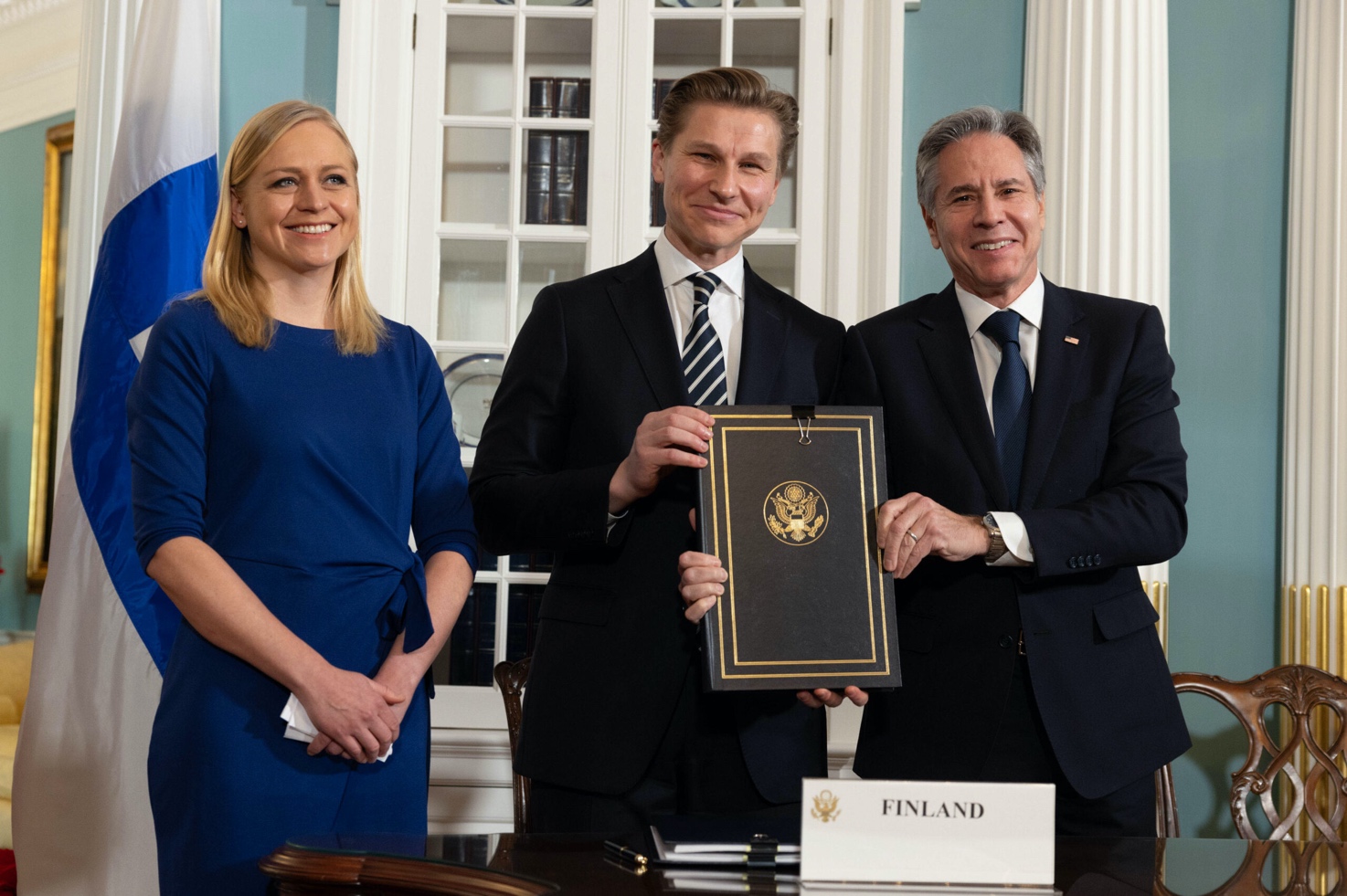
The vote on Sweden’s defense pact was preceded by a heated debate, with critics warning the treaty could lead to the deployment of nuclear weapons and permanent U.S. military bases in Sweden. There were also protest demonstrations when Sweden signed a Memorandum of Understanding, September 4, 2014.
“On May 13th, Prime Minister Ulf Kristersson suggested in an interview that he would not rule out the possibility of hosting U.S. nuclear weapons on Swedish territory during wartime… This is a significant decision that Swedish citizens have not been consulted on.”
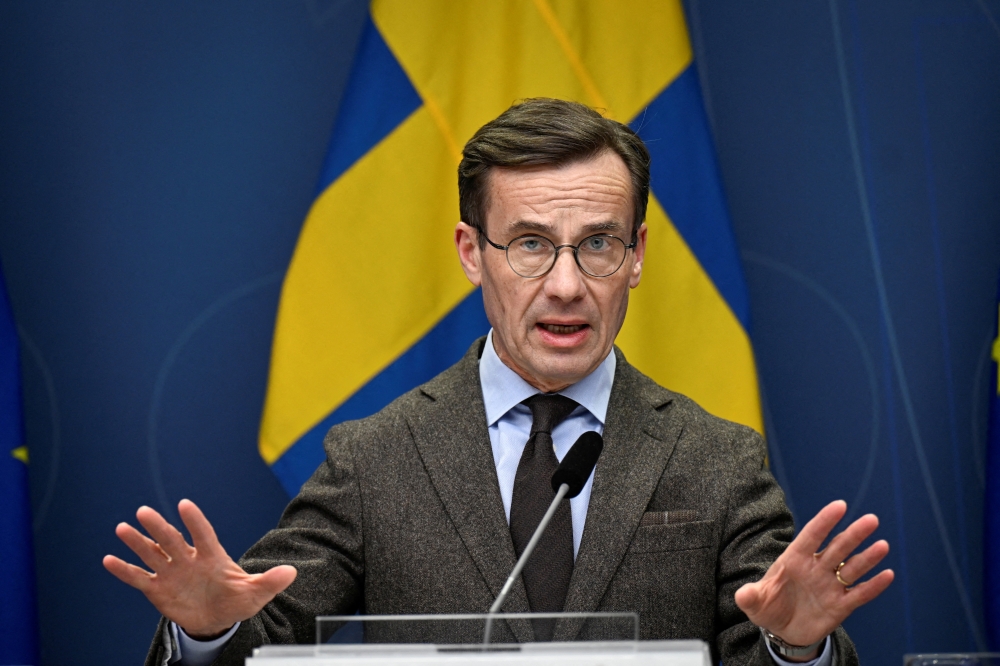
In Finland, however, lawmakers took steps to assure that DCA treaty applies to national law about no nuclear weapons, whose import and transit is prohibited on Finnish territory. Nevertheless, we will not know if the Yankees will obey that law since no national inspections are permitted.
Even before the DCA agreements were signed several hundreds of U.S. troops engaged in military exercises in Sweden and Finland, April-May 2023.
“We are eager and excited to be able to train with and learn from our Nordic Allies, including NATO’ two newest members,” concludes Major General Greg Anderson, commanding general of the 10th Mountain Division. This is the first time U.S. troops trained in Finland.
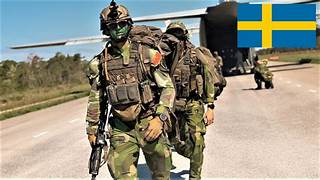
“A NATO headquarters will be established in Mikkeli to oversee the military operations, reporting directly to the alliance’s headquarters in Norfolk, on the US East Coast…Finland joined NATO in 2023, ending a 75-year period of neutrality. As a result, NATO’s shared border with Russia doubled, stretching to 2,600 kilometers.” [author’s emphasis]
“September 2024, it became known that the Rusich sabotage and assault reconnaissance group would guard the border along with the FSB. Rusich is a Russian neo-Nazi military organization, known for committing war crimes on the territory of Ukraine since 2014. The group’s leaders have been sanctioned by the U.S. and EU for ‘extreme cruelty’ during fighting in Ukraine…” according to the anti-Russian government Moscow Times.
How many enemy troops patrol at U.S. borders? How many guarding 2,600 kilometers of borders?
As of June 2024, Finland provided $2.4 billion military hardware, and $3.2 billion in civilian aid.
Sweden Expenditures
From neutrality overnight to the Yankees are coming to 17 military bases.
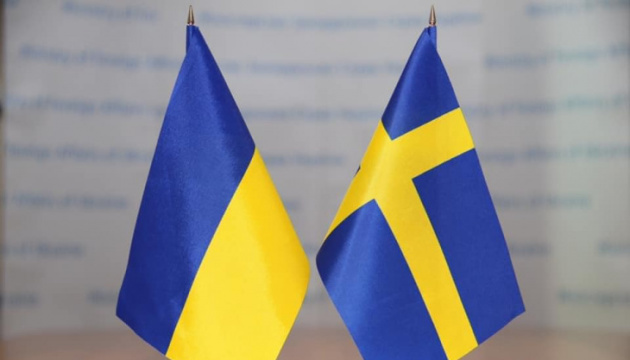
Since February 24, 2022 Sweden has sent military support amounting to $4.3 billion to Ukraine. It has appropriated an additional $2.5 billion each year 2024 to 2027.
These expenditures led to cut downs in public services, schools and the health sector. While no organizations support Russia directly, many groups and three left political parties (Left Party, Environment Party, Communist Party) protest NATO. Yet most people are passive, frightened by MSM demonizing President Putin as a dictator.
Norway Expenditures
During 2022, Norway used $420,000 in military support and $1.5 billion per year since. An additional $1.65 billion for civilian aid. What they used for destroying Nord Stream Pipelines is unknown.
Iceland Expenditures
Iceland has donated $220,000 through NATO and the International Ukrainian Fund for ammunition, telecommunications, fuel trucks and military training.
With the new DCA agreements, U.S.-ARME now has access to 41 military bases in Scandinavia, 15 of them at the Artic to assure that Russia cannot compete for whatever riches, especially fossil fuels, that can be found there. Sweden=17; Finland=15; Norway=4; Denmark=3; Greenland=1; Iceland=1. That is for starters.
The latest figures on how many bases US-ARME has in the world has grown from 800 to 918 in 98 countries, according to U.S.’s largest peace organization, World Beyond War.
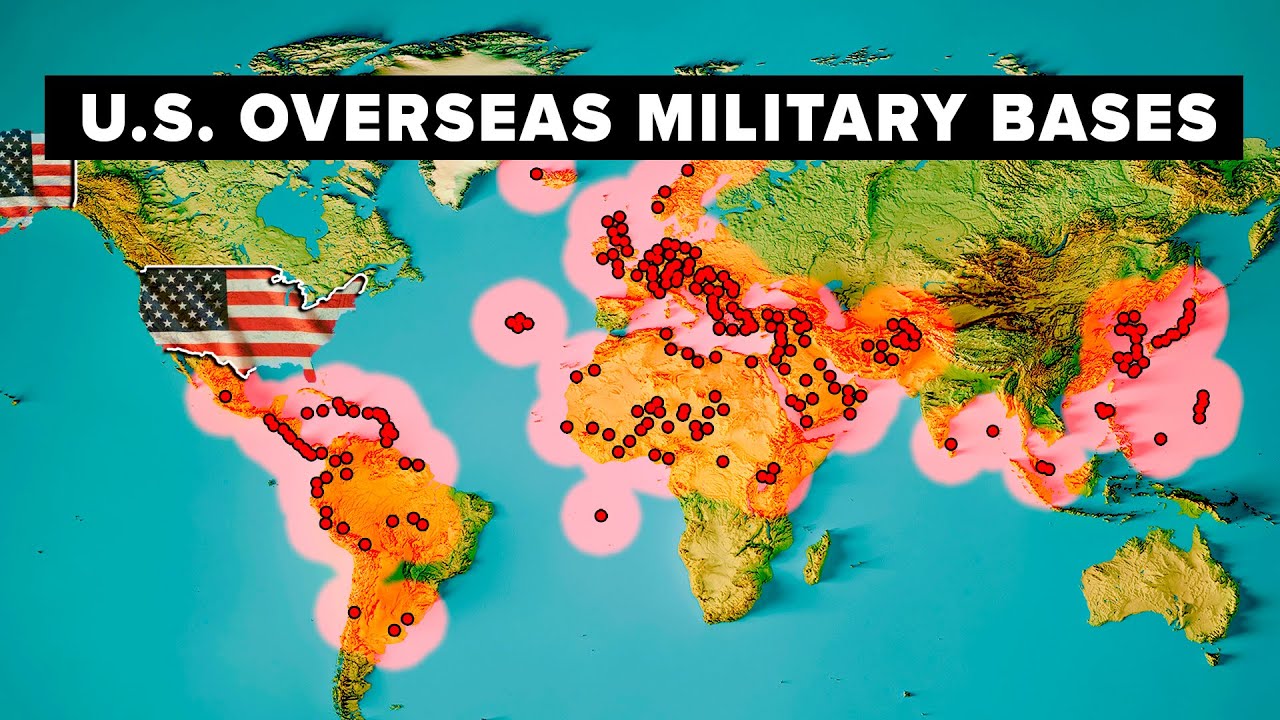
How many military bases has Russia outside of its territory? Wikipedia says 21—10 bases and 11 military facilities, such as radar posts. Most of them are in former Soviet Union Republics. None of them anywhere near the U.S. (China has one in Djibouti, Africa to prevent ship raiders.)
“Ukraine must win. Russia must be defeated,” stated EU last April. To reach that goal, “Western military support to Ukraine needs to reach 100 billion euros [$110 billion] annually. Western democracies should use 0.25% of their GDP for military help for Ukraine.”
The only objection came from the right-wing PM of Hungary, Viktor Orbán. Nevertheless, he backed down to allow it to pass—as in all other occasions when Orbán objects to EU and U.S./NATO military lust, such as letting Finland and especially Sweden enter NATO.
Ukrainian Refugees Are Also War Costs
Add to those direct sums of weaponry and money, Scandinavia (as well as all of Europe, The U.S. Commonwealth countries, and elsewhere) spends untold billions caring for several million Ukrainian refugees—at least 6.5 million abroad, and up to 8 million internally displaced out of 38 million population.
Scandinavia: Ukrainian refugees receive the same benefits as permanent residents: economic aid, schooling, health care, jobs. These figures come from searching each government’s records.
Norway=70,000 (June 2024) 11,000 at work
Finland=45,000 (June 2024)
Denmark=44,262 (June 2024) 11,000 at work
Sweden=42,000 (June 2024)
Iceland=4, 000 (June 2024)
2022 Nordic population statistics show:
Norway=5.425 million (about 1.5% Ukrainians)
Finland=5,548 million (about .08% Ukrainians)
Denmark=5,873 million (about .075% Ukrainians)
Sweden=10,452 million) about .04% Ukrainians)
Iceland=376,250 (about 1.1% Ukrainians
War Profits

“There is money in war,” headlines TV2 media.
A report by a Danish research organization, IRIS, reported recently that Denmark weapons industry has rapidly grown to include 500 firms producing parts for weapons, mainly for “defense” industry and government “defense” ministries. All are private, and 25 produce 97% of the products.
After the first year of war, Denmark’s el industry quadrupled its earnings from $600 million to $3 billion.
AP Moeller-Maersk shipping company always profits from U.S. wars but this one tops all records. The first year of the war, its profits were $30 billion—highest every—compared with $4 billion in 2021. The company pays only about 4% in taxes.
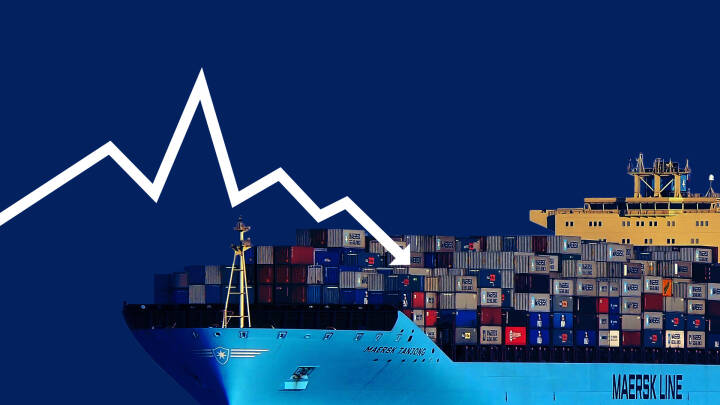
Other industries lose profits due to inflation, lack of parts and raw materials. I couldn’t find figures for the medicine industry, which surely profits incredibly, nor for its growing weapons industry.
However, the Danish government is bent on buying 8 to 10 more F-35A on top of its 27, even though most of them have not arrived. More profit for Lockeed-Martin, which has sold 990F-35s as of March 2024.

Lockheed-Martin is the world’s largest military aircraft company. It sold $66 billion in 2022 netting $6 billion. In 2023, sales were $67.6 billion netting $6.9 billion. Its chairman, James Taiclet’s net worth is nearly $100 million. His salary-compensations, in 2021, amounted to $18,111,211.
UN Secretary-General António Guterres said it was “immoral” that major oil and gas companies are reporting “record profits” while prices soar. “The combined profits of the largest energy companies in the first quarter of [2022] are close to $100 billion,” he said, urging governments to “tax these excessive profits, and use the funds raised to support the most vulnerable people through these difficult times.”
The UN chief added that during 2022, 345 million people in 82 countries will be “acutely food insecure” or “at a high risk of food insecurity”, an increase of 47 million due to the impact of the war in Ukraine.


“War is ‘good for business,’ a recruiter for BlackRock” said in June 2023, “acknowledging how such turmoil can create opportunities for profit. BlackRock is one of the world’s largest asset management company and holds shares in several defense industry enterprises.”
The recruiter’s words exposed the fact that Ukraine has unfortunately become a gold mine for the U.S. military-industrial complex (MIC).
It is impossible to find statistics of all the profits that weapons industries are earning worldwide from this war. U.S. big five—Boeing, General Dynamics, Lockheed Martin, Northrop Grumman, and Raytheon—earned $150 billion from Pentagon contracts in the first year of the war.

The Russia-Ukraine crisis is “a huge profit center for the big companies: Lockheed Martin and Raytheon and Boeing,” said William Hartung, a senior research fellow at the Quincy Institute for Responsible Statecraft.
“The US MIC continues to profiteer from the Russia-Ukraine conflict as it heads into its second year. The country’s weapons and defense contractors reportedly received nearly half – $400 billion – of the $858 billion earmarked in the 2023 defense budget.”
“Nearly 700 former high-ranking government officials in the U.S. now work for defense contractors, including former generals and admirals, revealed a report released by the office of Senator Elizabeth Warren in April.”
The oil companies are going bananas with profits.
“The ‘super-majors’—BP, Shell, Chevron, Exxon Mobil and Total Energies—have made $281bn (£223bn) since the war began in February 2022, according to Global Witness.” The Guardian, February 19, 2024.
The rebuilding construction industry will earn more than billions after the war. Ukraine has already been forced to offer all its government assets and much of its bread-basket grain industry for U.S. and EU “loans” of military machinery.
My thanks to Anna Arten, Swedish anti-war activist, for research assistance.

CovertAction Magazine is made possible by subscriptions, orders and donations from readers like you.
Blow the Whistle on U.S. Imperialism
Click the whistle and donate
When you donate to CovertAction Magazine, you are supporting investigative journalism. Your contributions go directly to supporting the development, production, editing, and dissemination of the Magazine.
CovertAction Magazine does not receive corporate or government sponsorship. Yet, we hold a steadfast commitment to providing compensation for writers, editorial and technical support. Your support helps facilitate this compensation as well as increase the caliber of this work.
Please make a donation by clicking on the donate logo above and enter the amount and your credit or debit card information.
CovertAction Institute, Inc. (CAI) is a 501(c)(3) non-profit organization and your gift is tax-deductible for federal income purposes. CAI’s tax-exempt ID number is 87-2461683.
We sincerely thank you for your support.
Disclaimer: The contents of this article are the sole responsibility of the author(s). CovertAction Institute, Inc. (CAI), including its Board of Directors (BD), Editorial Board (EB), Advisory Board (AB), staff, volunteers and its projects (including CovertAction Magazine) are not responsible for any inaccurate or incorrect statement in this article. This article also does not necessarily represent the views the BD, the EB, the AB, staff, volunteers, or any members of its projects.
Differing viewpoints: CAM publishes articles with differing viewpoints in an effort to nurture vibrant debate and thoughtful critical analysis. Feel free to comment on the articles in the comment section and/or send your letters to the Editors, which we will publish in the Letters column.
Copyrighted Material: This web site may contain copyrighted material the use of which has not always been specifically authorized by the copyright owner. As a not-for-profit charitable organization incorporated in the State of New York, we are making such material available in an effort to advance the understanding of humanity’s problems and hopefully to help find solutions for those problems. We believe this constitutes a ‘fair use’ of any such copyrighted material as provided for in section 107 of the US Copyright Law. You can read more about ‘fair use’ and US Copyright Law at the Legal Information Institute of Cornell Law School.
Republishing: CovertAction Magazine (CAM) grants permission to cross-post CAM articles on not-for-profit community internet sites as long as the source is acknowledged together with a hyperlink to the original CovertAction Magazine article. Also, kindly let us know at info@CovertActionMagazine.com. For publication of CAM articles in print or other forms including commercial internet sites, contact: info@CovertActionMagazine.com.
By using this site, you agree to these terms above.
About the Author

Ron Ridenour is a U.S.-born author and journalist, anti-war and civil rights activist since 1961. After joining the U.S. Air Force at 17, he saw the inner workings of U.S. imperialism first hand and resigned. In the 1980s and 1990’s he worked with the Nicaraguan government and on Cuban national media.
He now lives in Denmark and, in addition to writing a dozen books, has served as a special correspondent and freelance investigative journalist for many publications in the U.S. and several Latin American and European countries—among them: The Morning Star, New Statesman, The Guardian (U.S. and England), Playboy, Liberation News Service, Pacific News Service, Coast Magazine, Qui, Skeptic, Seven Days, and Pacifica Radio.
CAM co-founder Philip Agee wrote commentaries to two of his dozen books: Yankee Sandinistas: Interviews with North Americans Living and Working in the New Nicaragua, and Backfire: CIA’s Biggest Burn. See also: The Russian Peace Threat: Pentagon on Alert and Winding Brook Stories at Amazon and Lulu. Other work can be found at ronridenour.com.
Ron can be reached at ronrorama@gmail.com.




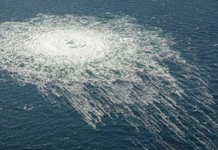
Here is a thoughtful article on the subject of Proxy Wars:
https://www.kcl.ac.uk/is-the-war-in-ukraine-a-proxy-conflict